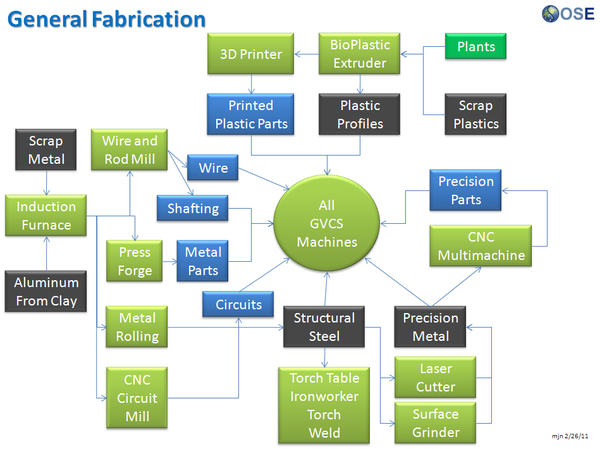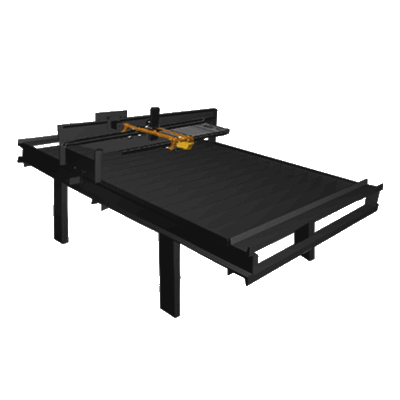CNC Torch Table: Difference between revisions
Jump to navigation
Jump to search

No edit summary |
No edit summary |
||
| Line 3: | Line 3: | ||
==Overview== | ==Overview== | ||
[[Image:TorchTable.png|thumb|400px|Torch Table]] | [[Image:TorchTable.png|thumb|400px|Torch Table]] | ||
[[Image:CNC Torch Tablepic.jpg|thumb|right|400px]] | |||
The CNC Torch Table is a table capable of cutting designs out of metal with a 2-axis torch controlled by computer. | The CNC Torch Table is a table capable of cutting designs out of metal with a 2-axis torch controlled by computer. | ||
| Line 14: | Line 16: | ||
==Product Ecology== | ==Product Ecology== | ||
[[Image:2b-Genfabecology.png|600px|thumb|General Fabrication [[Product Ecology]]]] | |||
'''Made with''' | '''Made with''' | ||
*[[Induction Furnace]] - Steel | *[[Induction Furnace]] - Steel | ||
| Line 23: | Line 28: | ||
*[[QA Plates]] | *[[QA Plates]] | ||
See [[Product Ecologies]] for more information. | See [[Product Ecologies]] for more information. | ||
Revision as of 20:13, 19 September 2011
| CNC Torch Table | ||
|---|---|---|
| Home | Research & Development | Bill of Materials | Manufacturing Instructions | User's Manual | User Reviews | 
| |
Overview
The CNC Torch Table is a table capable of cutting designs out of metal with a 2-axis torch controlled by computer.
The CNC Torch Table provides a quicker solution for cutting sheet metal, especially into intricate patterns that are difficult to cut by hand.
Description
Product Ecology

General Fabrication Product Ecology
Made with
- Induction Furnace - Steel
- Multimachine - Precision Guides, bearings
Creates
See Product Ecologies for more information.
Components
Specifications
Status
Currently on Prototype I, working with incorporating features into in OSE production runs.
Prototype II
- First step: perfection of mechanical design for replicability to 1/32" over 4x8' area
- Need open source controller, end stops, and z height automation/detection.
- We could use existing structure, with modifications. Right now we use gear rack. We can simplify the carriage structure.
- If we want to go all out - we could use full gas flow control - but that is probably beyond the scope of the present program - as it would require expensive parts until we can manufacture them ourselves.
- Open source stepper motors would be a good addition - if we could find somebody to design/fab them - that would be great.
- Computer vision for fully automated cutting would be the last step.
- Next steps: stiffening frame design to accommodate router heads
See Also

